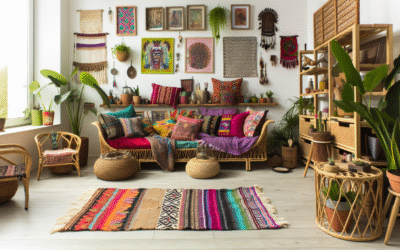
Are you looking to add some style and functionality to your home without breaking the bank?
Floating shelves are an excellent choice for those wanting to declutter and beautify their space. In this guide, you will learn how to create budget-friendly DIY floating shelves that not only enhance your décor but also meet your storage needs. We’ll share essential tips, step-by-step instructions, and the best materials to use—making this project accessible for everyone.
Here’s a quick roadmap of what we’ll cover:
- Understanding Floating Shelves
- Materials Required
- Step-by-Step DIY Instructions
- Design Ideas and Tips
- FAQs
- Conclusion and Next Steps
Understanding Floating Shelves
Floating shelves are a type of shelf that appears to “float” on the wall without visible brackets or supports. This style is popular for its clean, modern look that maximizes floor space while providing ample storage.
Benefits of Floating Shelves
- Space-Saving: Perfect for small areas or rooms.
- Versatile: Works in any room—living room, kitchen, or bathroom.
- Customization: Can be painted or stained to match your décor.
Materials Required
To create your budget-friendly DIY floating shelves, gather the following materials:
- Wood boards (Pine or MDF works best)
- Hidden shelf brackets
- Wood screws
- Sandpaper
- Paint or wood stain (optional)
- Tools: Drill, level, measuring tape
Step-by-Step DIY Instructions
1. Measure and Plan
Decide on the dimensions and placement of your shelves. It’s vital to measure twice to avoid unnecessary cuts.
2. Cut the Wood
Using a saw, cut your wood boards to the desired length. Sand the edges to create a smooth finish.
3. Install the Brackets
Mark the wall where the brackets will go and drill holes for your screws. Make sure to use a level to ensure they are even.
4. Attach the Shelves
Slide your shelves onto the brackets, ensuring they fit securely. Use screws for additional support if necessary.
5. Finishing Touches
Finish by painting or staining the shelves to match your home décor. Allow adequate drying time before placing items.
Design Ideas and Tips
- Layering: Use different lengths of shelves for a dynamic look.
- Decor Elements: Add plants, books, or art for visual interest.
- Lighting: Consider adding LED strip lights underneath for a cozy ambiance.
FAQs
How much weight can floating shelves hold?
Floating shelves can hold between 20-50 pounds depending on the brackets and materials used.
Can I use reclaimed wood for my shelves?
Yes, reclaimed wood adds a unique style to your shelves but ensure it’s sturdy and free from pests.
How do I prevent bowing in wide shelves?
Using thicker wood or additional brackets will help support the weight and prevent bowing.
Conclusion and Next Steps
Creating budget-friendly DIY floating shelves can elevate your living space, offering both utility and style. With the right materials and our step-by-step guide, you can achieve stunning results. It’s time to get creative!
For more ideas on home improvement, check out related articles on DIY home projects and interior design tips.
Content Disclaimer
The information provided in this article is for educational purposes only. Always consult a professional for advice tailored to your specific circumstances.
Categories
- Accent Walls & Ceilings (61)
- Art Curation & Gallery (62)
- Bedding Style Trends (68)
- Bedroom Makeover (81)
- Bohemian & Eclectic Styles (58)
- DIY & Budget-Friendly Decor (64)
- Eco-Friendly Design (62)
- Furniture Care (71)
- Home Decor & Design Ideas (162)
- Home Wellness Spaces (59)
- Integrated Outdoor Living (67)
- Japandi Style (61)
- Kids and Nursery Decor (59)
- Living Room Decor (79)
- Mix & Match Techniques (73)
- Modern & Contemporary Design (66)
- Rug Sizing & Placement (73)
- Scandinavian Design Inspiration (20)
- Seasonal Home Decor (79)
- Small Space Solutions (73)
- Wall Art & Painting Tips (77)
Recent Comments
Archives
Product Gallery
-
Large Area Green Rugs for Bedroom Nordic Living Room Decoration Shaped Carpet Irregular Plush Lounge Rug Home Thick Washable Mat
Rated 5.00 out of 5$54.94 – $346.41Price range: $54.94 through $346.41 -
Nordic Style Rugs for Bedroom Morandi Living Room Decoration Carpet Large Area Geometry Lounge Rug Home Cloakroom Non-slip Mat
Rated 5.00 out of 5$39.46 – $597.66Price range: $39.46 through $597.66 -
Irregular Shapes Living Room Decoration Carpet Modern Style Rugs for Bedroom Home Thicken Plush Rug Fluffy Soft Lounge Floor Mat
Rated 4.83 out of 5$55.84 – $347.37Price range: $55.84 through $347.37














